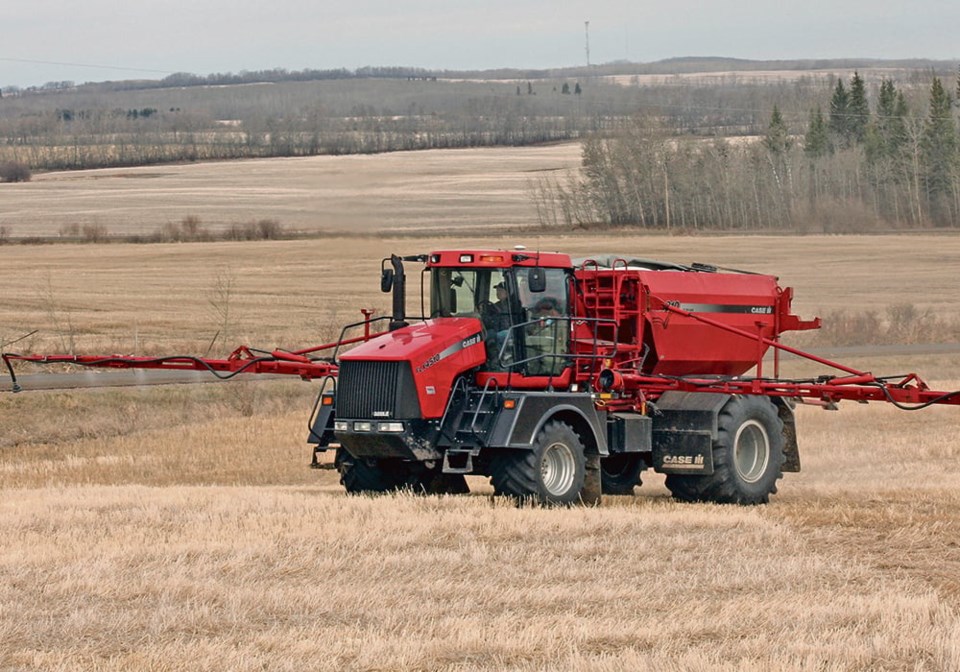WESTERN PRODUCER — They can, in certain circumstances, increase crop yields. They definitely cut greenhouse gas emissions from cropland. Yet many Canadian farmers remain skeptical about Enhanced Efficiency Fertilizers.
Emerging research has identified several promising scenarios for where and when these products can create wins for farmers and the environment.
However, as promising as the data appears, it also points to the reality that researchers are only beginning to understand how these products will intersect with farmers’ management choices in a way that capitalizes on that potential.
Every year, Fertilizer Canada conducts a survey asking growers across the country about their fertilizer management practices.
At least one of the questions is on the use of Enhanced Efficiency Fertilizers (EEFs), products that reduce nitrogen losses and potentially increase the amount of nutrients available to the crop.
In 2017, Fertilizer Canada reported that 24 per cent of growers used an EEF.
In 2021, the industry group said 15 per cent of the “nitrogen volume applied in Canada is utilizing an enhanced efficiency fertilizer product.”
The two numbers are different, but they tell a similar story. The 24 per cent is for the number of growers who used an EEF in 2017 and the 15 per cent is for the volume of nitrogen fertilizer in 2021.
Regardless, the survey data suggests that the volume of enhanced efficiency fertilizers applied remains relatively small compared to conventional fertilizers.
Tom Bruulsema, chief scientist with the International Plant Nutrition Institute Canada, said usage of EEFs has been steady for several years.
“(In 2021) canola and wheat growers across the Prairies applied 17 to 19 per cent of their nitrogen volume as some kind of (EEF),” said Bruulsema, who lives in Guelph, Ont. and has a PhD. in soil science from Cornell.
Bruulsema provides scientific support for Fertilizer Canada, the Fertilizer Institute and the International Fertilizer Association, to help advance nutrient stewardship.
It’s possible that a dedicated group of Canadian farmers are buying EEFs every year, but most growers use the standard nitrogen fertilizers, such as urea and anhydrous ammonia.
Enhanced efficiency fertilizers cost more per acre than the conventional products.
In 2022, the Canola Council of Canada article estimated the additional cost at $10 to 15 per acre. Prices could be higher now, as the cost of all fertilizers has jumped.
Using spring wheat as an example, the 2024 Manitoba Agriculture cost-of-production estimates for crops, says the cost of fertilizing wheat is $124 per acre. Assuming an additional cost of $15 per acre, an EEF would add 12 per cent to that fertilizer bill.
Canadian growers may have decided that EEFs aren’t worth the money, which explains why most choose conventional nitrogen fertilizer.
Yet, scientific evidence indicates there could be economic and agronomic benefits from Enhanced Efficiency Fertilizers:
A meta-analysis of 182 studies conducted in more than 20 countries, shows that EEFs can boost crop yields by about five per cent.
Studies from Ontario have shown that enhanced efficiency products increased corn yields by five to 13 per cent.
Research undertaking in Saskatchewan suggests it’s feasible to cut nitrogen rates by 10 to 20 per cent for some EEFs, while achieving the same yield.
EEFs may increase the residual nitrogen in the soil, which may boost crop yields in future growing seasons.
In May of 2022, Drury, Ward Smith from the AAFC research centre in Ottawa and a group of scientists from China published a meta-analysis on inhibitors and their effect on ammonia losses, nitrous oxide emissions and crop yields.
The study was published in Global Change Biology.
The scientists looked at 182 studies from 222 experimental sites in 21 countries.
The data set included 17 sites in Canada and experimental results from every continent, except Africa.
The tests were on a range of crops, including cereals, canola, sugarcane, vegetables and cotton. The studies also looked at a range of soil textures and dozens of fertilizer types were tested at more than 220 experimental sites around the planet.
“It (the meta-analysis) was comprehensive,” Drury said.
The scientists found that urease inhibitors (UI) improve yields and nitrification inhibitors (NI) cut N2O emissions.
“The UI were most effective in enhancing crop yields (by five per cent) and reducing NH3 volatilization (by 51 per cent)…. Whereas NI were most effective at reducing N2O emissions (by 49 per cent),” the paper says.
But for urease inhibitors and EEFs to work, there must be significant N leakage.
“The application of UI mitigates NH3 loss and increases crop yields especially in high NH3-N loss scenarios,” said the authors of the paper.
A meta-analysis, like the one by Drury and his collaborators, can provide answers to big picture questions.
In this instance they determined that EEFs can improve crop yields, on average, but Canadian agronomists and growers need answers to questions that are more specific.
Will EEFs improve yields in my province or municipality? And when do they work?
“You have to put a regional focus on these losses in order to identify situations where high losses occur,” Drury said.
“And situations where high losses occur, then these treatments are… very effective.”
Contact [email protected]




